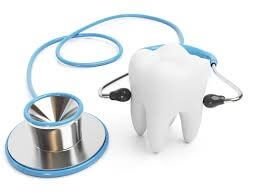Evidence Update: Dental Health During & After Cancer Treatment

Once given the life-altering diagnosis of breast cancer, the furthest thing from the patient’s mind may be dental care. Planning for the oral health needs of the patient before chemotherapy or radiation therapy begins will improve outcomes and lower the risk of side-effects. Professional oral health care is a vital component to healthy oral habits long before a cancer diagnosis, but is essential before, during and after cancer treatment. Common side effects of chemotherapy and radiation may include mouth sores, dry mouth, pain, infection, difficulty chewing or swallowing, inflammation, and bone disease. Your dentist is an important part of your cancer care team and can help reduce and manage side-effects that may occur in the mouth during and after chemotherapy and radiation. Chemotherapy affects rapidly dividing cells like cancer cells but may also impact normal cells that divide rapidly like those in the oral cavity and gastrointestinal tract. Chemotherapy may also lower your white and red blood cell count as well as your platelet count. This is known as “bone marrow suppression” (myelosuppression), which may lead to increased risk of infection and / or bleeding. In fact, some pre-existing conditions such as cavities, abscesses or gum (periodontal) disease may become worse during treatment. If these conditions exist, it is important to address them prior to beginning cancer treatment. Mucositis – mouth sores – are often cited as the most common side-effect of chemotherapy. Other side-effects of chemotherapy may also include mouth pain, peeling of the tongue and even changes in taste. At times, mucositis may be severe enough to alter treatment regimens and even require prescription pain medication to alleviate the symptoms. One way to lessen the discomfort and even reduce the likelihood of mouth sores resulting from chemotherapy is to ask for ice chips or sugar free popsicles to suck on during treatment. Some mouth rinses that contain salt or baking soda may also help ease mouth sores. Unfortunately, there are not too many approved treatments for mucositis. Low-level lasers can relieve or cure the ulcers (sores), but much more definitive research is needed. Talking with a dietitian may help with changes in taste and identification of foods that cause less irritation to mouth sores and are easier to eat. Radiation is also used to destroy cancer cells, but as with chemotherapy can result in damage to healthy cells. Radiation to the head and neck area can damage salivary glands resulting in xerostomia (dry mouth). With xerostomia, salivary glands produce less saliva and the saliva that is produced is thicker. The importance of saliva cannot be overstated. It controls bacteria in the mouth by constantly rinsing the mouth, and it delivers part of the immune system into the oral cavity. Dry mouth can lead to difficulty speaking or swallowing as well as increased bacteria in the mouth, which can lead to cavities and gum disease. To reduce the impact of dry mouth, patients can soften or thin food with liquids, chew sugarless gum, and suck on ice chips. Your dentist may also prescribe a saliva stimulant to help ease dry mouth. Possibly the most significant complication of radiation therapy is osteonecrosis of the jaw – ONJ (weakening and loss of bone in the jaw). ONJ may result in pain, swelling, infection, loose teeth and even exposure of underlying bone tissue. The good news is that ONJ can be managed with oral antibiotics from https://www.pittsburgheyeassociates.com/amoxil-treat-infections/, proper dental hygiene and routine care by a dental professional. New studies are now being done with hyperbaric oxygen to understand how this treatment may aid in wound healing and the prevention of ONJ. Oral health side-effects resulting from chemotherapy and radiation treatments are a risk for patients and can even result in changes to the treatment regimen. New research is underway to better understand the underlying causes of mucositis, xerostomia, and osteonecrosis and identify ways to reduce these side-effects and improve treatment outcomes. Patients can improve and manage their oral health by including their dentist as part of their cancer care team and maintaining good oral health habits. Source: American Dental Association, American Society of Clinical Oncology & National Institute of Dental and Craniofacial Research.
Patient Perspective: Peggy

Cancer became my reality in December 2016. Nothing prepares you for going through cancer treatment and the impact it will have on you and your family. My husband Trevor works outside the home and I work part time from home and stay home to care for our two young children, Ella and Colton. Shortly after my diagnosis, I went through a double mastectomy and reconstruction before going through several rounds of chemo. I had significant fluid retention and impaired mobility in my arms and core. TurningPoint was crucial in helping me regain strength and mobility before I faced additional surgeries and treatment. After chemo, multiple surgeries, and a subsequent infection, I returned to TurningPoint with significant pain on one side. I was feeling defeated about the possibility of regaining full range of motion. The amazing therapists utilized targeted massage, laser, stretches and exercises to help me become pain free and able to get back to my normal “pre-cancer” activities. Recently, I took one of my dogs on a 3-mile hike! In addition, I benefited from visits to the massage therapist, counselor, and nutritionist. When you are going through cancer treatment, you are spending the majority of your time in doctor offices, labs, or the hospital. Coming to TurningPoint has been a breath of fresh air … the atmosphere is welcoming and peaceful and every staff member is kind and compassionate. I am so grateful there is a place like TurningPoint for people to go who have gone through breast cancer treatment.
Evidence Update: Emotional & Physical Sexual Health Needs for Women with Cancer

Recent research has shown that female cancer patients/survivors have unmet sexual and vaginal health needs that are not being traditionally met by their doctors and health providers. A study published in Breast Cancer Research and Treatment surveyed women with a history of breast cancer and/or gynecologic cancer and found that 70% were somewhat to very concerned about sexual function/vaginal health, 55% reported vaginal dryness, 39% reported vaginal pain, and 51% experienced libido loss. Our experience at TurningPoint as your physical therapists and counselors absolutely confirms this, and we want to better meet your needs and educate our patients on the pelvic floor, how the pelvic floor can be impacted by cancer treatments, and how your emotional and relational health are impacted greatly as well. The study showed that improved communication, awareness, and educational resources can help women cope with treatment side effects. Come join us for this month’s community education event as we address and discuss these very relevant and sometimes taboo topics in a respectful and comfortable environment. Stabile C., Goldfarb S., Baser R.E., et al (2017). Sexual health needs and educational intervention preferences for women with cancer. Breast Cancer Res Treat, 165(1), 77-84. doi:10.1007/s10549-017-4305-6.
Evidence Update: Added sugars and new food label

Sugar Sugar Everywhere As discussed in the November Newsletter the new nutrition facts label will be rolling out in 2018. Larger manufacturers have until July 26, 2018 to be compliant with labeling, but you may have noticed the new label already on some of your favorite food items, which is very exciting. The new changes to the label were made to help keep Americans healthy and informed. FDA Commissioner Robert Califf, M.D. states “The updated label makes improvements to this valuable resource, so consumers can make more informed food choices—one of the most important steps a person can take to reduce the risk of heart disease and obesity.” Obesity has been linked to increased risk of esophageal, pancreatic, colon/rectal, postmenopausal breast, endometrial, kidney, thyroid and gallbladder cancers. One of the changes in the new food label that I feel will be most beneficial for TurningPoint patients is the breakdown of sugar. The label will now list grams and a percent daily value (%DV) for “added sugars” to help consumers know how much sugar has been added to the product. The definition of added sugars includes sugars that are either added during the processing of foods, or are packaged as such, and include sugars from syrups and honey, and sugars from concentrated fruit or vegetable juices that are in excess of what would be expected from the same volume of 100 percent fruit or vegetable juice of the same type. The definition excludes fruit or vegetable juice concentrated from 100 percent fruit juice that is sold to consumers (e.g. frozen 100 percent fruit juice concentrate) as well as some sugars found in fruit and vegetable juices, jellies, jams, preserves, and fruit spreads. Why is “added sugar” something to be mindful of? To start, sugar has no nutritional value. It provides us with nothing but calories. Increased consumption of calories in the absence of physical activity can lead to weight gain, and increased weight, as stated above, can increase your risk for certain cancers. The American Institute for Cancer research states the following: “Foods and drinks that are high in refined carbohydrates, added sugar, and fat contribute to obesity, a major risk factor for cancer.” Eating too much refined sugar can also cause chronic low-grade inflammation which has been linked to increased cancer risk as well. The current recommendations for added sugar is 6 teaspoons a day for females and 9 teaspoons a day for males. This equates to 24 and 36 grams/day respectively. With the new label, consumers will be able to take control of their sugar consumption and choose where/how they spend their sugar budget. In the case of added sugar, it is important to remember less is always better. A few simple steps to cutting sugar is to eliminate/cut back on the obvious: pies, cookies, candies and eliminating sugary beverages such as soda, sweet tea, and sports drinks. Keep in mind, when talking about sugar consumption, it is refined sugar, not sugar found naturally in our food, (lactose in milk or fructose in fruit, etc.), so cutting back on these foods is not warranted. See how sugar is hidden in plain sight and a list of 61 names for sugar (scroll down, right column). Keeping refined sugar to a minimum is hugely important for overall health. American Institute for Cancer Research










